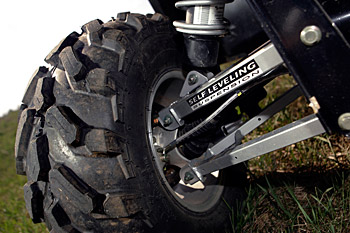One of the biggest mistakes utility users make is overloading the cargo bed or racks on an ATV or SxS.
Every mass-production off-road vehicle with any kind of utility-targeted use has a maximum load rating.
Most riders tend to disregard these numbers or complain they’re simply too low to be practical.
Here’s why the OEMs set these ratings the way they do. On an ATV with racks, the front rating is designed to allow the owner to load the rack to its recommended capacity without having difficulty turning the handlebars in either 2WD or 4×4.
When the front racks are loaded, the springs are compressed, there’s less suspension travel and when the vehicle is off-camber or off-center, handling can be difficult, particularly if the front hubs are engaged with power going to them.
The rear capacity is another thing. If you overload either the rack or cargo bed at the back, the front end gets incredibly light and every time you hit a bump, the front wheels want to lift or float.
Not only does this provide way less front traction but steering is so light, the vehicle won’t respond and, instead, plows through corners with terrible understeer.
Both Arctic Cat (Prowler HDX) and Polaris (Ranger HD) have air suspended utility rear shock setups that can compensate for extra weight at the back . Can-Am uses something like this on some of its 2-up ATVs.
Overload both ends of an ATV and, although you will have a better weight balance than front or rear loading only, steering effort becomes very heavy and the vehicle gets severely top-heavy. This makes handling burdensome, and worse… dangerous.



